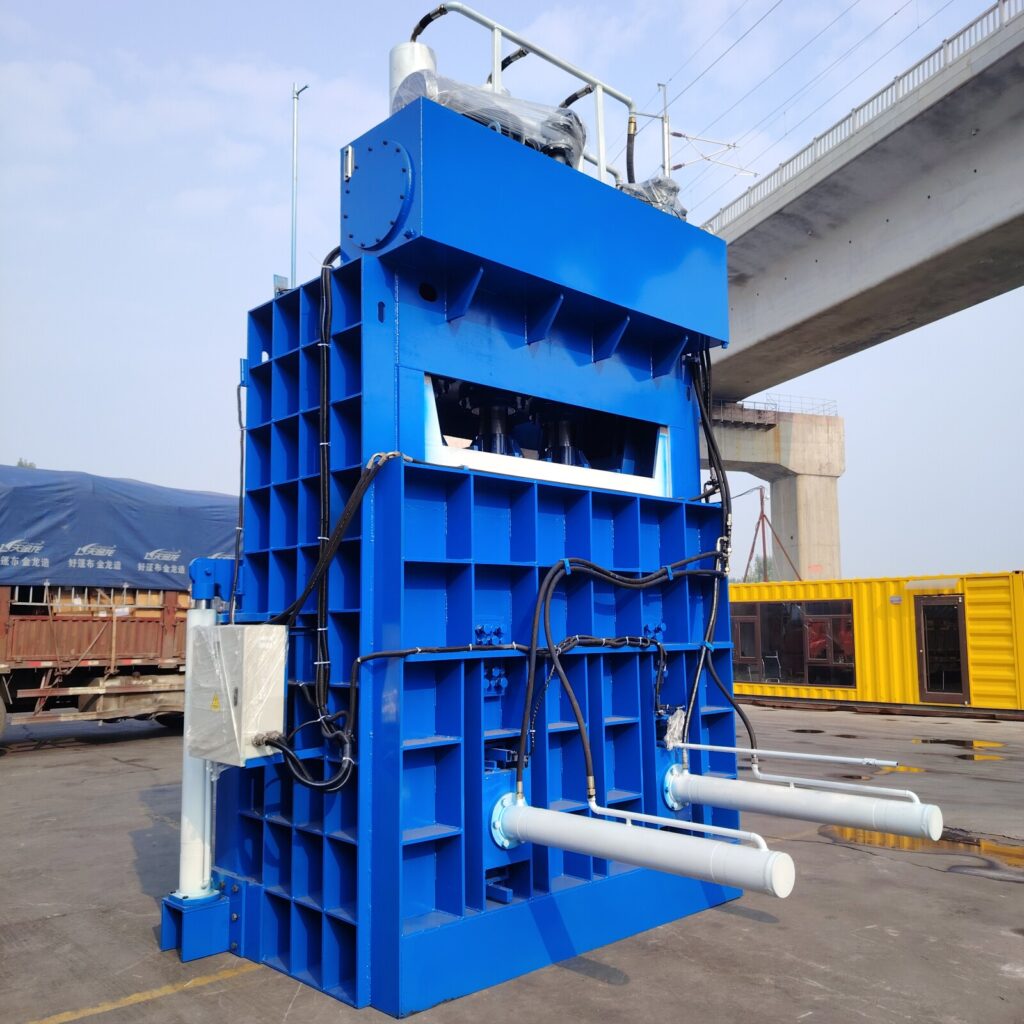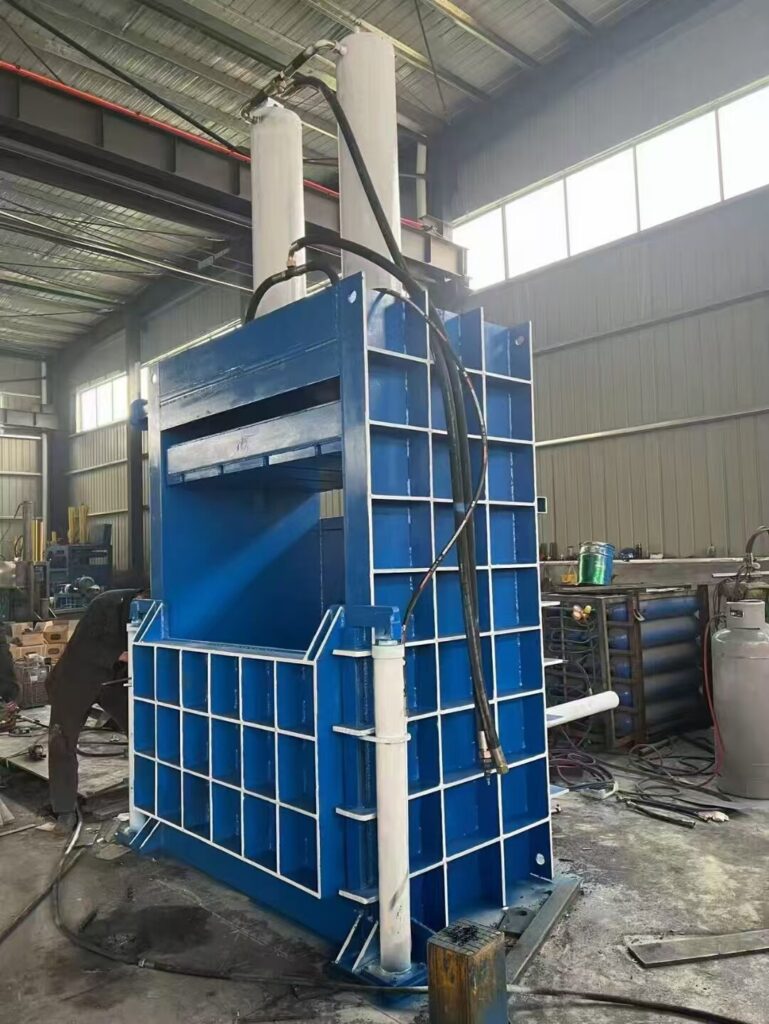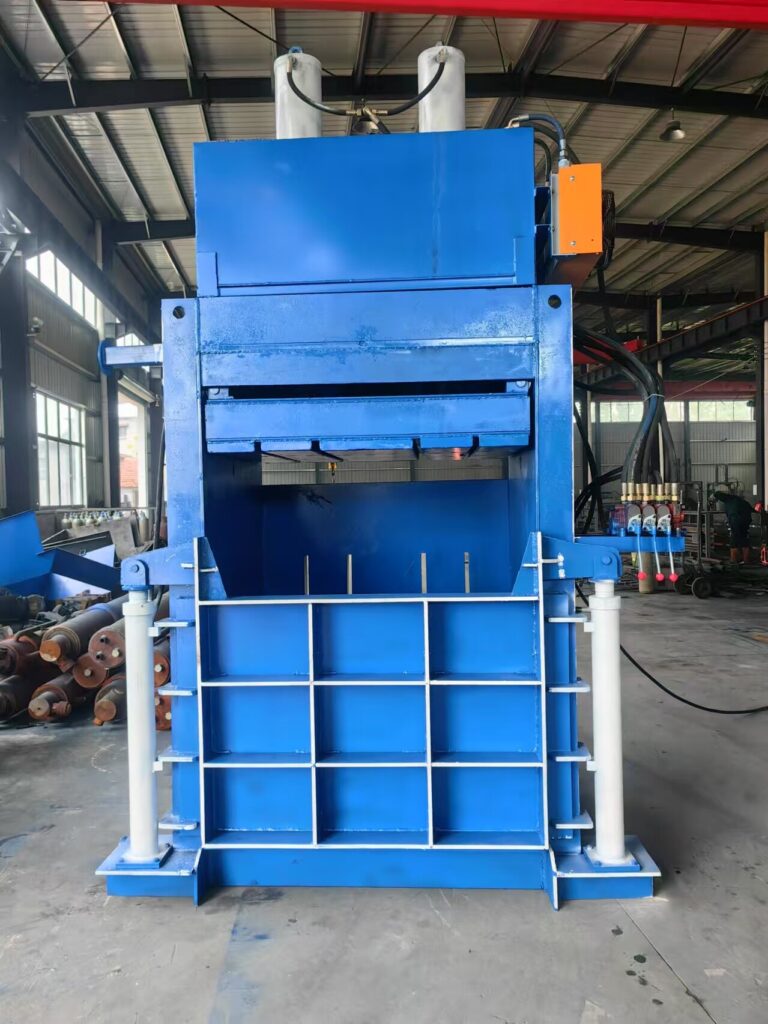What Is a Vertical Baler?

A vertical baler is a heavy-duty industrial machine designed to compress and bundle recyclable materials such as cardboard, paper, plastics, and textiles into compact, manageable bales for easier storage, transportation, and recycling. Unlike horizontal balers, which are typically larger and used for high-volume operations, vertical balers are more compact, making them ideal for small to medium-sized businesses, retail stores, warehouses, and recycling centers. The machine works by loading waste materials into a chamber, where a hydraulic press applies downward force to compress the contents into dense bales, which are then tied with wire or strapping for secure handling. One of the main advantages of vertical balers is their space-saving design, allowing them to fit into tight workspaces while still providing efficient waste compaction. They also help reduce waste disposal costs by minimizing the volume of recyclables, leading to fewer pickups and lower transportation expenses. Additionally, vertical balers contribute to sustainability efforts by promoting recycling and reducing landfill waste. Common applications include compacting cardboard boxes in retail environments, bundling plastic films in manufacturing plants, and processing textile waste in the fashion industry. When choosing a vertical baler, key factors to consider include bale size capacity, compression force, automation level, and the types of materials being processed. With proper maintenance and operation, a vertical baler can significantly improve waste management efficiency, cut operational costs, and support eco-friendly business practices. Whether you’re a small business owner or part of a larger industrial operation, investing in a vertical baler can streamline your waste handling process while supporting environmental responsibility.
Why Use a Vertical Baler?

Vertical balers are essential machines for businesses looking to improve waste management, reduce costs, and enhance sustainability. These compact yet powerful devices compress recyclable materials like cardboard, plastic, paper, and textiles into dense, uniform bales, making storage, transportation, and recycling more efficient. One of the primary reasons to use a vertical baler is its space-saving design, which allows it to fit into small facilities like retail stores, warehouses, and manufacturing plants without requiring extensive floor space. Unlike horizontal balers, which are bulkier and suited for high-volume operations, vertical balers offer a practical solution for small to medium-sized businesses with moderate waste output. By compacting waste into bales, companies can significantly reduce the frequency of waste pickups, leading to lower disposal and transportation costs. Additionally, baled materials are easier to handle and more valuable to recycling centers, often generating revenue when sold to scrap dealers or recycling facilities. Another advantage is environmental sustainability—vertical balers help divert waste from landfills, reducing a company’s carbon footprint and supporting corporate social responsibility goals. Industries such as retail, logistics, food processing, and textiles benefit greatly from vertical balers, as they streamline operations and keep workspaces clean and organized. Modern vertical balers also feature user-friendly controls, safety mechanisms, and customizable bale sizes to suit different material types and volumes. Investing in a vertical baler not only improves operational efficiency but also contributes to long-term cost savings and environmental conservation. Whether you’re a small business owner or part of a larger industrial operation, a vertical baler is a smart investment for optimizing waste management and promoting sustainable practices.
How to Use a Vertical Baler?

Operating a vertical baler correctly is crucial for maximizing efficiency, ensuring safety, and prolonging the machine’s lifespan. To begin, always inspect the baler before use, checking for any visible damage, loose components, or obstructions in the compaction chamber. Ensure all safety features, such as emergency stop buttons and safety interlocks, are functional. Next, position the waste materials—such as cardboard, plastics, or textiles—evenly inside the chamber, avoiding overloading or uneven distribution, which can cause jams or uneven bales. Close and secure the chamber door or gate, then activate the machine using the control panel, typically starting with the “compaction” cycle. The hydraulic press will descend, compressing the materials into a dense bale; monitor the pressure gauge to avoid exceeding the machine’s capacity. Once compaction is complete, the baler will automatically stop or require you to initiate the “eject” cycle to release the bale. Secure the bale with wire, strapping, or netting to maintain its shape during handling and transportation. After ejection, clear any residual debris from the chamber to prevent buildup and potential malfunctions. Regular maintenance, including lubrication of moving parts, inspection of hydraulic hoses, and cleaning of sensors, is essential for optimal performance. Always follow the manufacturer’s guidelines for load capacity, cycle times, and safety protocols to prevent accidents. Training employees on proper operation and safety measures is equally important to minimize risks and ensure consistent results. By adhering to these steps, businesses can enhance waste management efficiency, reduce disposal costs, and contribute to environmental sustainability. Whether you’re new to vertical balers or seeking to refine your process, mastering these operational techniques will ensure reliable performance and long-term benefits for your waste management strategy.
